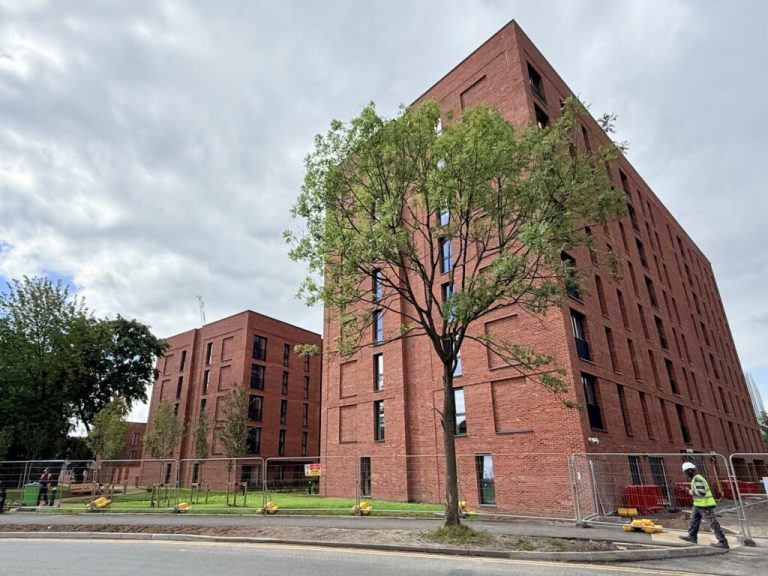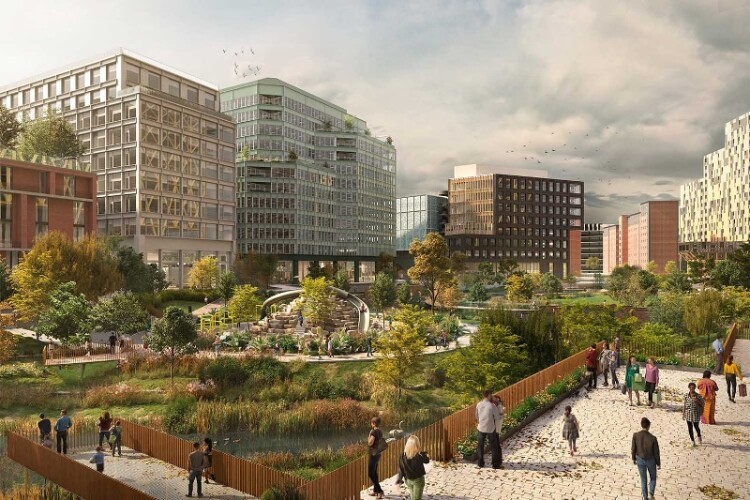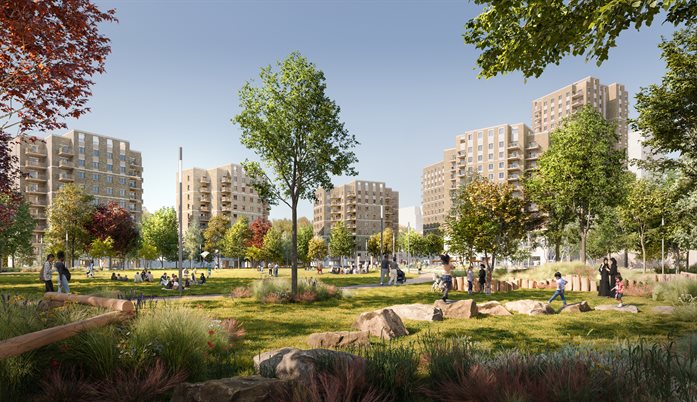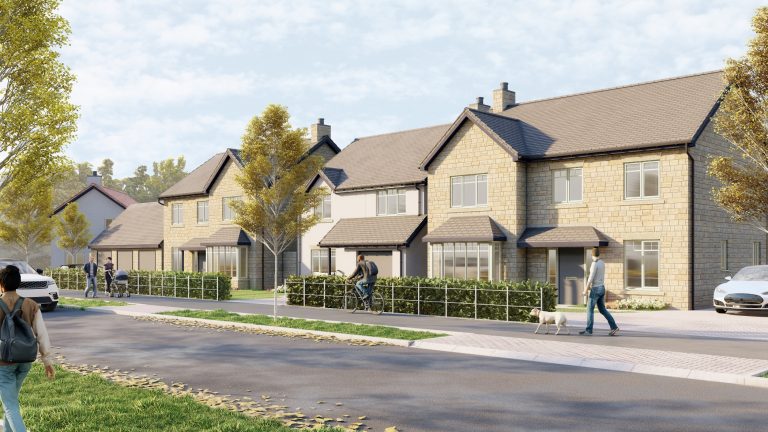Aviva Capital Partners and Moda Group have completed a landmark investment deal with NatWest, Homes England, and the West Midlands Combined Authority (WMCA) to unlock a 1,000-home rental community in Digbeth, Birmingham. The funding agreement for the £200m+ Stone Yard project in Digbeth showcases the strength of opportunity for regeneration through collaboration between the private and public sectors driving the delivery of high quality new homes. The funding package includes debt financing from NatWest and Homes England via the Home Building Fund. This will support the delivery of phase one of the build-to-rent (BTR) community, which will comprise 605 high-quality homes across four blocks. In addition the West Midlands Combined Authority has provided brownfield grant funding, enabling the project to increase its affordable housing provision to 20%, which will be offered at a Discounted Market Rent. This provision will be dispersed throughout the development, enabling community led regeneration whilst delivering the highest quality of place and accommodation. A future development phase will deliver a further three blocks, bringing the total number of homes at Stone Yard to 995. Last year, Homes England signed a Strategic Place Partnership (SPP) with the WMCA, setting out shared ambitions to advance locally-led housing growth and regeneration in key locations in the region, including the East Birmingham & North Solihull corridor which is anchored by Digbeth in the city centre. Homes England has supplied debt funding of around £40m to the Stone Yard financing package. The development will champion social and environmental sustainability, targeting top level certification from leading accreditors including Fitwel, Home Quality Mark and BREAAM. The new homes will be complemented by a range of amenity spaces for all residents, including co-working spaces, 24/7 gyms and studio spaces, lounges and private dining rooms. Alongside new homes, the scheme will include community-focused features such as commercial units, landscaped public areas, and links to local attractions will contribute to Digbeth’s emergence as a vibrant, inclusive neighbourhood. The buildings and new public realm will be operated by Moda with its signature focus on service, technology and health and wellbeing, ensuring the curation of a professionally managed, diverse community in the heart of Birmingham. Caddick Construction, Moda’s sister company, will build the neighbourhood and has commenced initial work on site. Completion of phase one is expected in 2028. Located on a prominent four-acre brownfield site, Stone Yard is in a highly accessible location on Deritend Road. The site sits at the heart of the city’s creative quarter, adjacent to the Custard Factory and directly opposite the new Eastside Metro extension and the forthcoming HS2 Curzon Street Station. Sophie White, Regeneration Sector Lead at Aviva Capital Partners, said: “We’re delighted to be working with Moda to provide high quality accommodation in Birmingham, helping to support the local economy and beyond. The partnership with NatWest, Homes England and WMCA has been critical in getting the scheme underway for this key brownfield site in Digbeth. Sustainability is at the heart of this development, with community and affordability critical elements helping to ensure it supports the local area to get ready for the future.” Tony Brooks, Executive Chairman of Moda Group, said: “This milestone is a powerful demonstration of what can be achieved when the public and private sectors work collaboratively to realise a shared, long-term vision for regeneration. “Aligned, we will be able to deliver much-needed new rental homes, at pace. With high quality new public realm completing the neighbourhood, Stone Yard will be a pivotal part of the wider regeneration of Digbeth, transforming a brownfield site into a thriving urban community.” Michael Goode, Director and BTR Lead, NatWest, said: “Stone Yard is an exciting project for Birmingham. The delivery of much needed new homes, with enviable sustainability credentials, is aligned to NatWest’s ambitions in BTR. “It was a pleasure working with Aviva Capital Partners and Moda, alongside our funding partners at Homes England and WMCA, in delivering an innovative financing solution.” Marcus Railing, Chief Investment Officer at Homes England, said: “As the government’s housing and regeneration agency, our aim is to support public and private sector partners to unlock strategic housing sites, and we are committed to supporting stakeholders of all sizes to achieve their ambitions. “Stone Yard is a prime example of how the Agency works collaboratively with both public and private partners to achieve our mission to build much needed new communities that people can be proud to call home. “This funding agreement also represents how Homes England works with Mayoral Strategic Authorities by aligning investment, unlocking opportunity and delivering at scale through Strategic Place Partnerships.” Building, Design & Construction Magazine | The Choice of Industry Professionals














